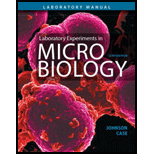
Why did you add Escherichia coli to sewage, which is full of becteria?
To write:
The reason E.coli is added to sewage, which is full of bacteria.
Introduction:
Raw sewage is mainly the water containing excrement, industrial release and debris. Excrement is the major source of harmful microorganisms including bacteria, viruses and parasites. These microorganisms contaminate the sewage water that leads to many water-borne diseases.
Explanation of Solution
Sewage is a rich source of bacteria that infects the enteric bacteria like E. coli. Phages present in the sewage will go through many cycles of the infection and lyses E. coli. E. coli acts as a sewage indicator and mainly found in sewage treatment plants and environmental waters.
The quantifications of E. coli serve in order to evaluate the performance of the microbial residue. Virulent bacteriophage multiplies rapidly after infecting the host cell and destroys the cell through lysis. The bacteriophage may lyse through the host cell or lysogenize the host. It shows the pathogenicity present in the water and the sewage sludge.
Thus, E. coli is added to the sewage, which is full of bacteria as it acts as sewage indicators and found in the environmental waters.
Want to see more full solutions like this?
Chapter 37 Solutions
Pearson eText for Laboratory Experiments in Microbiology -- Instant Access (Pearson+)
- Which of the following proteins or protein complexes is directly required for the targeting of mitochondrial inner membrane multipass proteins, such as metabolite transporters, whose signal sequence is normally not cleaved after import? OA. TIM22 OB. TIM23 C. OXA OD. Mia40 OE SAMarrow_forwardQUESTION 9 An animal cell has been wounded and has a small rupture in its plasma membrane. Which of the following is more likely to happen next? OA. The cell rapidly cleaves by cytokinesis. OB. The rate of receptor-mediati endocytosis is increased. OC. The rate of exocytosis is increased. OD. The rate of pinocytosis is increased.arrow_forwardFor the a subunit of a trimeric G protein, A. a G-protein-coupled receptor GPCR) acts as a guanine nucleotide exchange factor (GEF), whereas a regulator of G protein signaling (RGS) can act as a GTPase-activating protein (GAP). B. a GPCR acts as a GAP, whereas an RGS can act as a GEF. C. both a GPCR and an RGS can act as a GEF. O D. both a GPCR and an RGS can act as a GAP OE. None of the above.arrow_forward
- A cell expresses a transmembrane protein that is cleaved at the plasma membrane to release an extracellular fragment. The fragment binds to receptor proteins on nearby cells and activates signaling pathways resulting in altered gene expression patterns in the cells. What form of intercellular signaling does this represent? OA. Contact-dependent signaling B. Paracrine signaling OC. Synaptic signaling D. Endocrine signaling E. Autocrine signalingarrow_forwardWhich of the following drive nuclearly encoded proteins import into the mitochondrial matrix? OA. ATP hydrolysis OB. Membrane Potential OC. K+ Ions OD. A and B OE. None of the abovearrow_forwardWhich of the following statements is true regarding Cholesterol import into the cell? OA. It is transported within LDL B. Receptor mediated endocytosis is involved OC. Release of cholesterol occurs in the Lysosome D. All of the above are true statements OE. None of the above are true statementsarrow_forward
- In which of the following schematic drawings of signaling pathways does the activation of the receptor lead to gene expression? Activating and inhibitory steps are indicated with (+) and (-), respectively. OA OB ㅇㅂㅇㅂㅇㅁ (+) Gene Expression Activated Signaling proteins Transcription receptor activator Bl D Gene Expression Gene Expression ㅁㅁㅇ Gene Expression Gene Expressionarrow_forwardWhich of the following events normally activates a GTP-binding protein? OA. GTP hydrolysis by the protein OB. Activation of an upstream GTPase-activating protein OC. Activation of an upstream guanine nucleotide exchange factor OD. Phosphorylation of a bound GDP molecule by an upstream phosphorylase OE. Pi release after GTP hydrolysisarrow_forwardProteins that are synthesized on the Rough ER are imported into the ER lumen after their signal sequence is recognized. Which of the following is responsible for the signal recognition? OA. Signal Recognition Particle, OB. Signal Sequence C. Stop-transfer sequence OD. Both B and C OE. None of the abovearrow_forward
- Stroma Light 4 H 4 H I Thylakoid- membran 2 H₂O D1 D2 Min Light 2,6 ATP 2 NADP+ 2 NADPH/H+ Fp 2,6 ADP +2,6 P 8 H+ 12 H+ 4 H+ Lumen PS II Cyt bef PS I ATP-Synthase 12345 5a 5b 6arrow_forwardWhich of the following statements is TRUE regarding the signal recognition particle (SRP)? OA. SRP is made up of RNA and Proteins B. SRP binds to the signal sequence OC. SRP binds to the elongation factor binding site on the ribosome and pauses translation D. All of the above are true statements OE. None of the above are true statementsarrow_forwardWhich of the following pathways does NOT directly deliver materials to lysosomes? OA. Endocytosis B. Exocytosis OC. Phagocytosis OD. Autophagy OE. Macropinocytosisarrow_forward
 Comprehensive Medical Assisting: Administrative a...NursingISBN:9781305964792Author:Wilburta Q. Lindh, Carol D. Tamparo, Barbara M. Dahl, Julie Morris, Cindy CorreaPublisher:Cengage Learning
Comprehensive Medical Assisting: Administrative a...NursingISBN:9781305964792Author:Wilburta Q. Lindh, Carol D. Tamparo, Barbara M. Dahl, Julie Morris, Cindy CorreaPublisher:Cengage Learning Medical Terminology for Health Professions, Spira...Health & NutritionISBN:9781305634350Author:Ann Ehrlich, Carol L. Schroeder, Laura Ehrlich, Katrina A. SchroederPublisher:Cengage Learning
Medical Terminology for Health Professions, Spira...Health & NutritionISBN:9781305634350Author:Ann Ehrlich, Carol L. Schroeder, Laura Ehrlich, Katrina A. SchroederPublisher:Cengage Learning Biology 2eBiologyISBN:9781947172517Author:Matthew Douglas, Jung Choi, Mary Ann ClarkPublisher:OpenStaxBasic Clinical Lab Competencies for Respiratory C...NursingISBN:9781285244662Author:WhitePublisher:Cengage
Biology 2eBiologyISBN:9781947172517Author:Matthew Douglas, Jung Choi, Mary Ann ClarkPublisher:OpenStaxBasic Clinical Lab Competencies for Respiratory C...NursingISBN:9781285244662Author:WhitePublisher:Cengage





